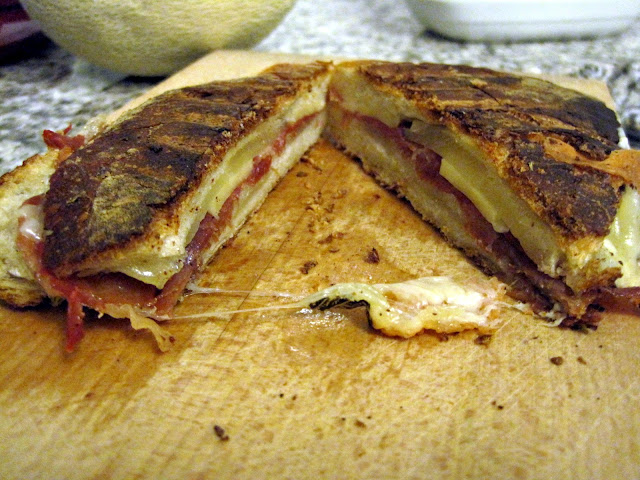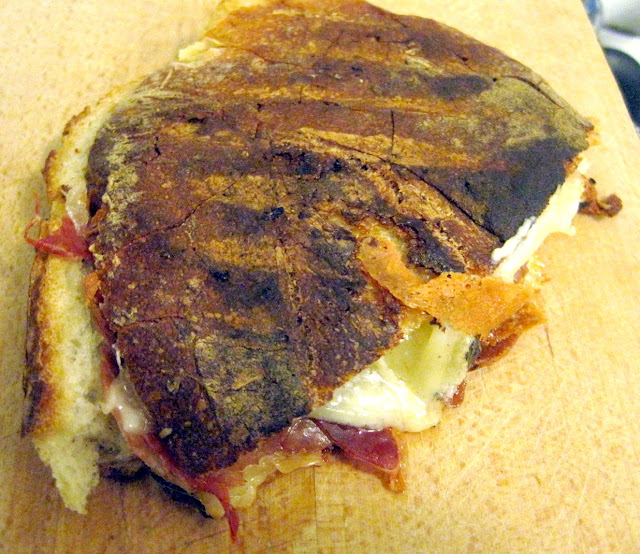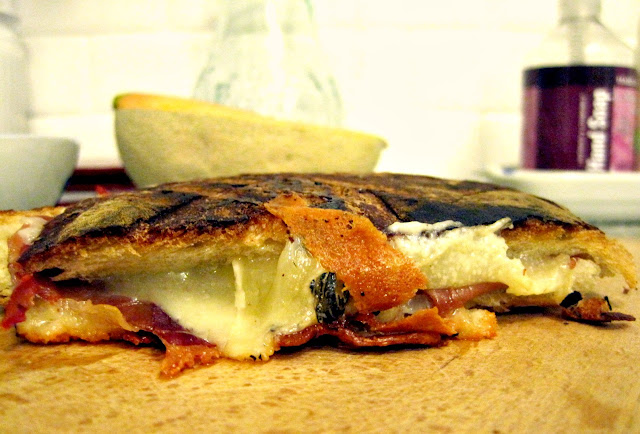
One of the most ubiquitous panini (plural for sandwich) in all of the Italy is prosciutto and cheese. In fact, I made so many of the aforementioned panini in Italy one summer (helping Zia Teresa in her small shop) I thought all Italians survived on prosciutto (or prosciutto cotto <steam cooked Parma ham>) and cheese alone.


We recently made a pane in cassetta (Italian for toasted sandwich and not panini) with Prosciutto di Parma, leftover pieces of manchego and a Calabrian goat’s milk cheese, and Pane Pugliese from Sullivan Street Bakery (you can of course use any homemade bread such as a ciabatta, as well). We used a heavy duty grill pan, olive oil <liberally added to the interior sections of the sliced bread> and a heavy lid to press down on the ingredients. The key to a good pane in cassetta is a low to medium flame and patience. That is to say, if you get your pan too hot you’re going to burn the exterior of your bread and get a cold center. So, plan on pressing down each side of the panino for about 10 minutes. You can add virtually any ingredient to a pane in cassetta, including any salumi, most any cheese, roasted peppers, cured olives, hot peppers, roasted onions, sun dried tomatoes, pesto, etc.


